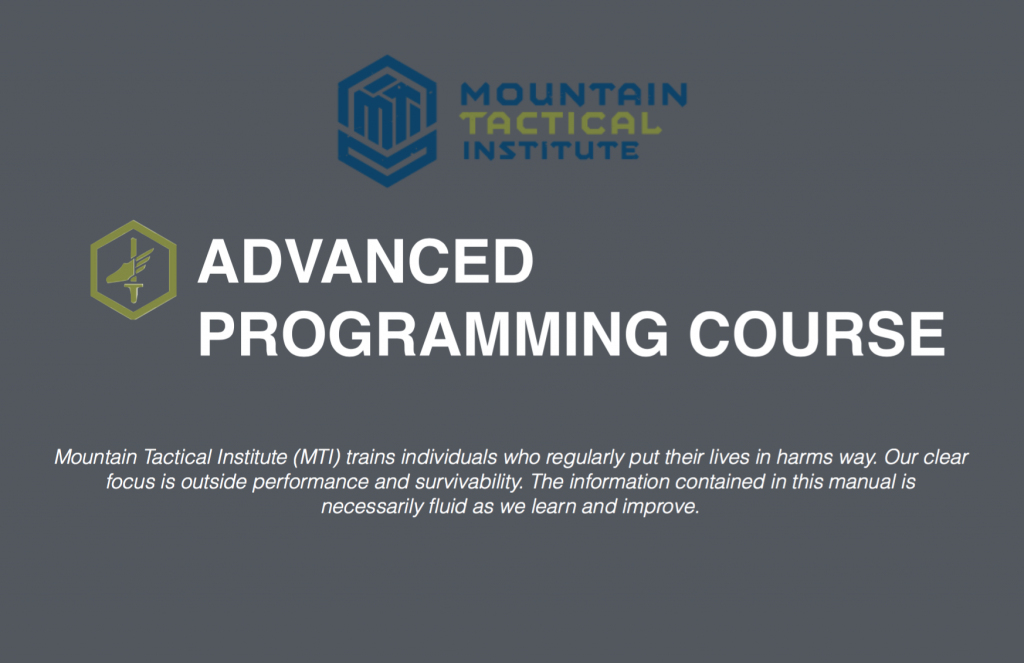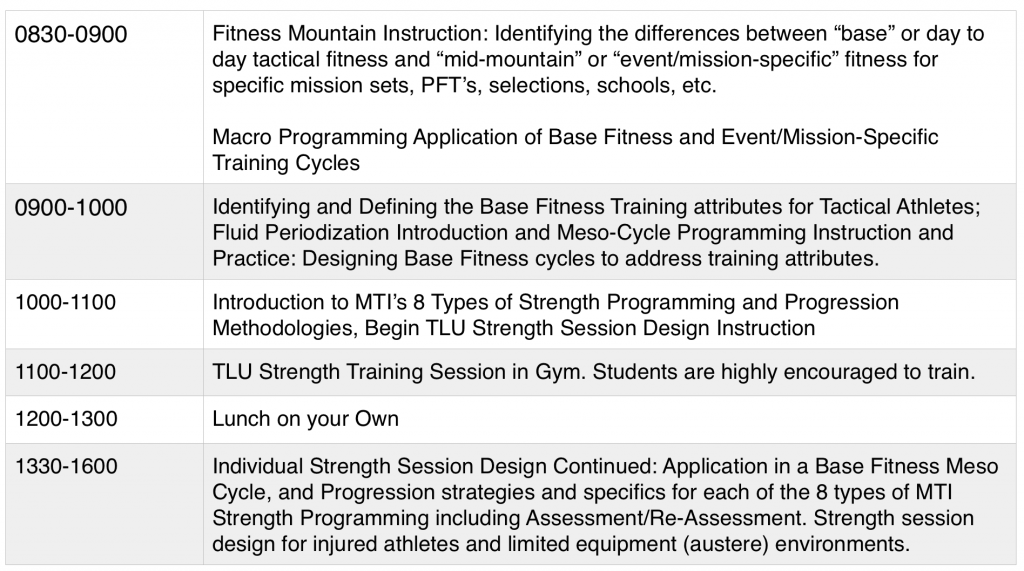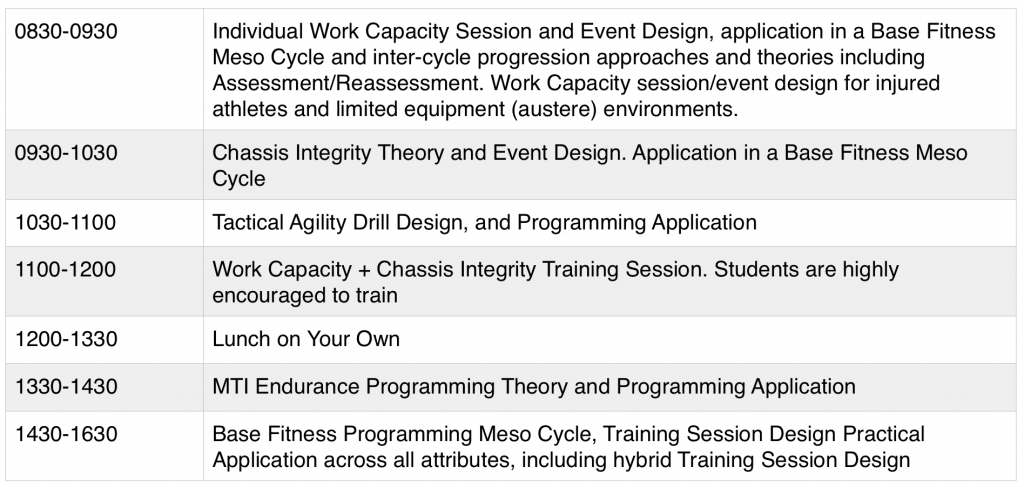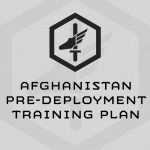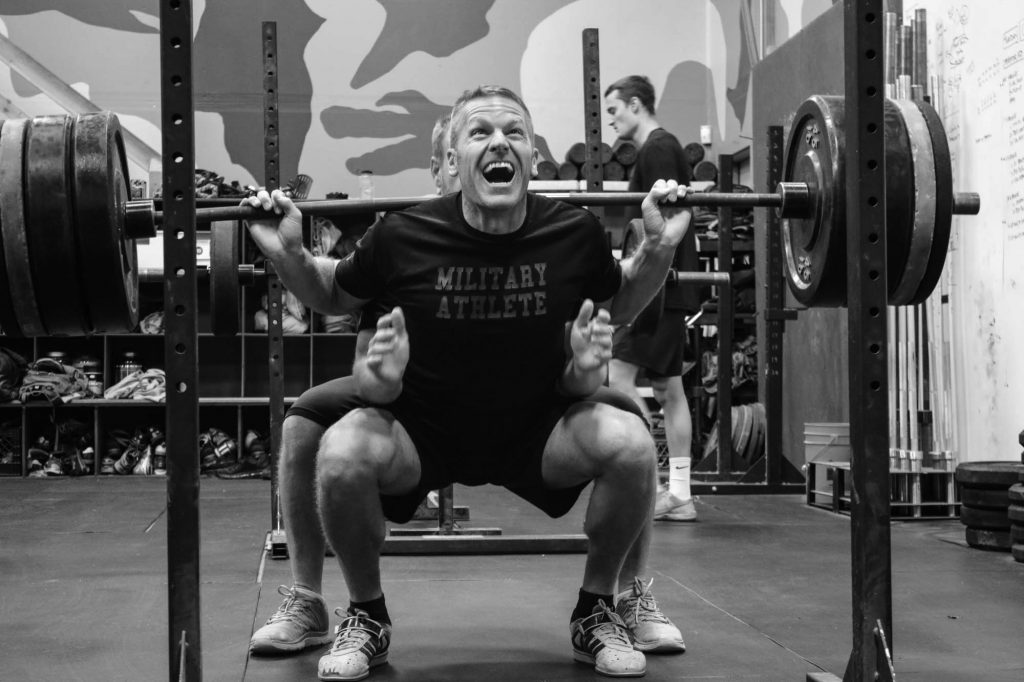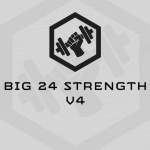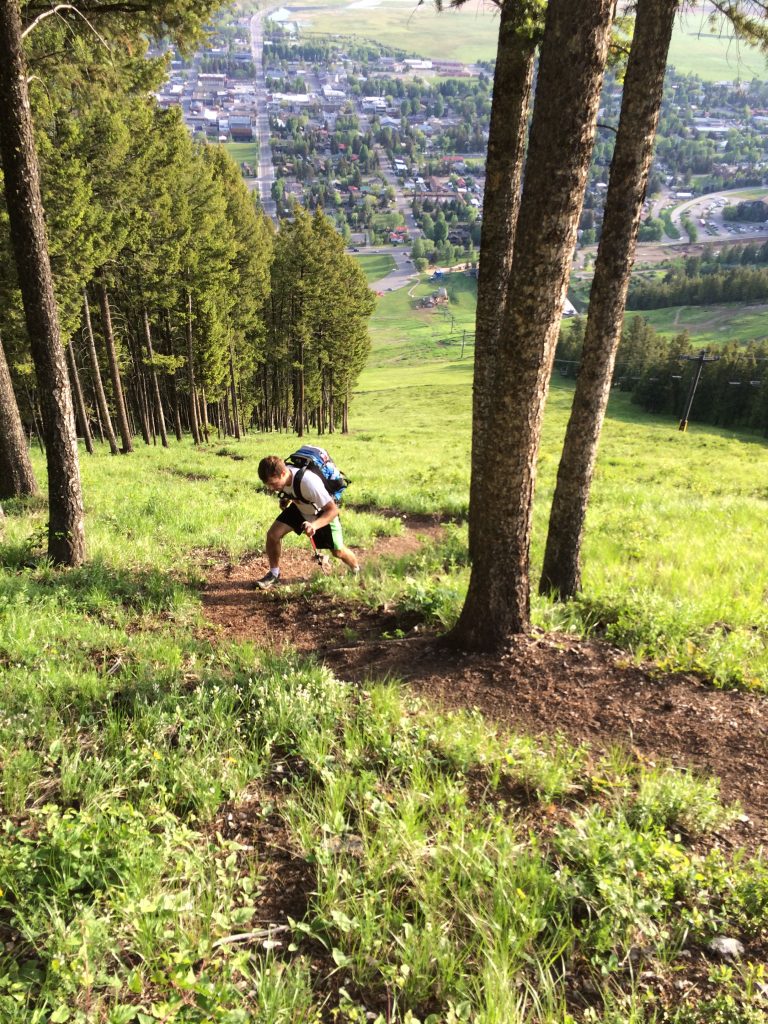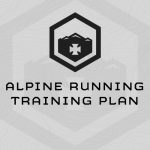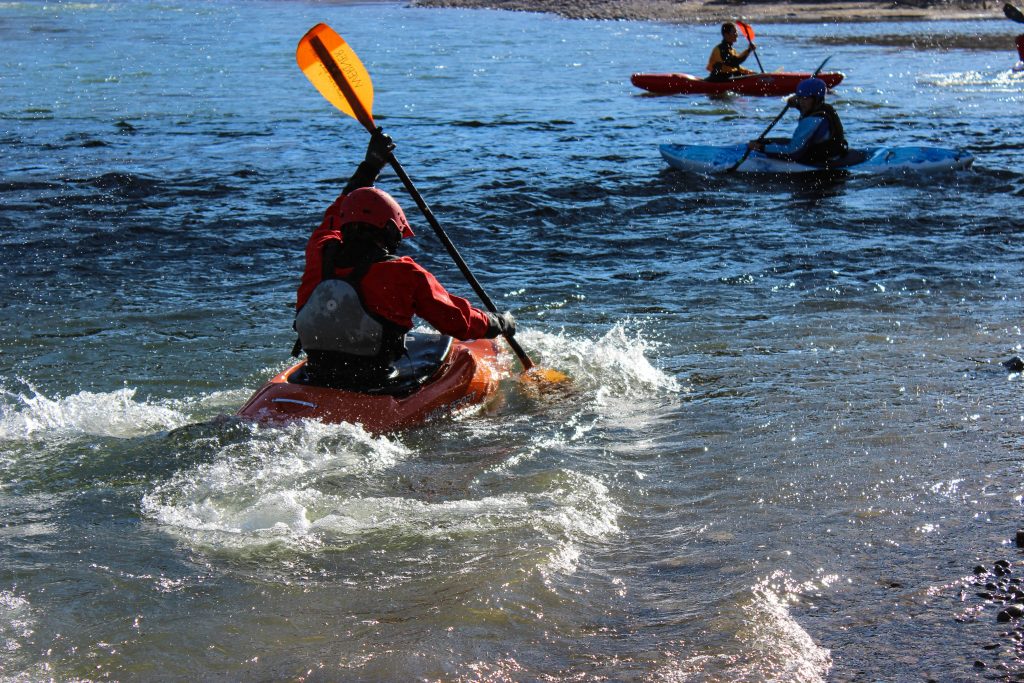QUESTION
I’m going on a 9 month “deployment” to Europe as a medic in an aviation brigade. I know we will be going to the field occasionally but I don’t see us going for more than 2 weeks at a time every other month. During those 9 months I would like to maximize my time training for SFAS with the intent to go to selection in December or January. Would you be able to recommend a training program for something in that time frame? Something that includes a solid training program and nutrition recommendations.
ANSWER
Once you’re scheduled firms up, work backward from your selection start date so you complete in its entirety, the final plan in the packet – the
Ruck Based Selection Training Plan, directly before selection.
Nutrition?
Here are our nutritional recommendations.
– Rob
QUESTION
Could you explain the difference between the Spirit Series and the Cop Movie Packet for LE? It appears that each trains the same attributes, is one easier or harder, or designed for a different type of LE athlete? Thank You.
ANSWER
No significant difference. We designed the Cop Movie packet because several guys had worked through the spirits packet and wanted some more programming, but didn’t want to subscribe to get access to the daily LE sessions.
Start with the Spirits Packet.
– Rob
QUESTION
It’s looking like I’m going to be hiking Kilimanjaro this June. I am excited but have some questions about training which I’m wondering if you can help with. I live in far Northern Maine so the elevation is a far cry from Kili’s 19k peak. I know those elevation masks are bunk and I’m just going to have to acclimate to the altitude while I’m there, but I’d like to be as aerobically well prepared as possible to make up for the altitude difference.
I am far more of an anaerobic fan (currently on month four of Wendlers 5-3-1 and loving it) than aerobic but I understand this needs to change for this trek. I have your backpacking preseason plan which I have done before but I’m wondering if it would be helpful to follow that up with either the Rainier or Denali plan. Obviously Rainier is 5k shorter than Kilimanjaro but given that there’s no way to train for altitude without being in it, what is your opinion on the best way to prepare? (Denali ascents are FAR more taxing than Kili as I understand it. Our group will be picking out with porters carrying all but our packs.)
Also, should I put heavy weight training aside until after?
ANSWER
Rainier would work. Yes – on dropping the heavy loading for the step ups. I’d probably have you use a 20-25# pack.
If you’ve got vertical you can train on, you can hike uphill over step ups, which are drudgery, as you know. If not, books on tape help!
– Rob
QUESTION
I found your site while looking for a training program for Marine OCS. I was pretty impressed with your site, and hope to be able to fully implement. I am hoping to attending this September, if all goes well, and the only thing I am worried about is the physical fitness test. I am quite familiar with weight training and bodyweight, but was wondering where to start. I know you have your Marine OCS plan, as well as the PFT plan. But with overall fitness needed for OCS, I was wondering which plan to start with or if you had another plan on your site that I should focus on first.
ANSWER
You have 31 weeks until OCS. Here’s what I recommend:
Weeks Plan
7 Total Rest
14 Total Rest
25 Total Rest
– Rob
QUESTION
I have a question about the FBI Special Agent PFT Training program. Looking through it, I’m not quite understanding the taper week. Is that supposed to be the 7th week? If so, can you provide some insight or recommendations as to how to train that week?
ANSWER
Originally I had done it by leaving the programming the same, but dropping the rounds of each effort, but after your note and looking at the plan, I moved the final PFT to Week 6, and then programmed total rest for Thur/Friday of that week.
Thanks for your note. Should be clear now.
– Rob
QUESTION
Due to temporary physical restraints beginning in January of last year and ending in this upcoming August, I am unable to give 100% to my training for the Portland Police Bureau Physical Agility Test.
Before this unfortunate setback, I was at the gym 5x/week and was well above physical standard for my age and weight.
I will be able to start retraining in the beginning of August and am looking for the best option to get back into shape that is realistic but could have me ready for both the test and the physical strain from the PPB Academy by the beginning of April 2020.
Is there any program that you would recommend?
ANSWER
I don’t have a specific plan for this specific assessment. From what I do have I’d recommend our
LE OnRamp Training Plan. It will over-prepare you for this assessment, build your overall LE fitness and get you ready for the Academy in the place of our LE Academy plan.
If possible, you’ll definitely want to run the Portland agility test multiple times, if possible, before your actual assessment – so you’re familiar with it’s parts, what it feels like, and for the practice.
– Rob
QUESTION
I am looking to go for selection in the next year, and am wondering what the main differences are between your CSOR program and the one CANSOFCOM sends you once your NOI is in (it’s called CSOR Special Forces Operator Pre-Selection Physical Fitness Training Program 2nd Edition).
I have attached the program since it’s open source info, so you can take a look if you’re not already familiar with it.
Is your program better? And if so,
ANSWER
I won’t compare our programming to others. I will say our method for selection-specific plans begins with learning as much as possible about the specific fitness demands of the selection, including entry fitness gates, timed rucks and runs, and any details available on team or other work capacity events. We then work backward from these fitness demands and build our programming progressively.
Often our selection programming includes 3 assessment weeks – Beginning, middle and end. The programming between assessments often uses assessment results to “scale” progressions – your programming is based on your fitness level at that time.
As well, the programming is overall cumulative – which conditions our body and mind to the high volume of work that you’ll face at selection.
Finally, we are strict in exercise selection. We don’t use selection programming to build your overall strength or general endurance. We identify the specific fitness demands, exercises and modes you’ll face at selection, and hammer those again, and again.
Good luck at selection!
– Rob
QUESTION
I am currently in shape, but looking to reduced my body fat. I am 6’1″ 225# and about 20% body fat. I work out about 5 times a week. I am not sure if the fat loss program would be good for me because I have been training for so long. I was looking for input on which program, if not the fat loss program, would be best for me.
ANSWER
And make sure your diet is clean. 80-90% of body fat is diet related.
Here are our nutritional guidelines – which I’d recommend for you, but I’d tell you not to take a “cheat day.”
– Rob
QUESTION
Good Morning Gentlemen, which workouts would yall recommend for someone with a lower back injury ( bulging disc in L2&3 L5&S1) that is trying to get back where I was before I got hurt.
ANSWER
What is your movement ability now? Are you working now? Are you training?
If training, what exactly are you doing?
– Rob
ANSWER
I’m doing physical therapy, I’m running again but not at the speed I need to pass my Pt for work, the part of my PT that has me worried Is having to pull a 180 pound dummy out of a vehicle drag it and place it in another vehicle. Just looking for ideas to help me strengthen my core so I dont re-injure myself.
ANSWER
Be smart and cautious. This plan has helped many other tactical athletes gain confidence in their low backs post-injury.
– Rob
QUESTION
First off thanks for your programs, I use the PFT/CFT already and it has greatly improved my scores. Recently, I purchased your subscription package and would appreciate your recommendation for a plan to use. I want to focus on strength and endurance training as I have a few months of downtime before my training picks up. Background is I am a Marine waiting for flight school. Currently I have been looking at the Achilles program, but I am open to suggestions if you have any that fit better than that. Thank you for your time.
ANSWER
– Rob
QUESTION
I love your assessments and scientific approach in these. I’ve followed your stuff for a while and appreciate that you’ve literally dedicated you life to this and training people. With respect to work capacity (WC), Greg Glassman one said work capacity is to fitness what location is to realestate.
I wanted to share some of my own experience with WC training, or at least my understanding of it. I’m 48 years old, 5’4″, and 145;bs, and I’ve always been a good endurance guy in running swimming and rowing. I’m a small man, so I don’t favor strength training since my strength never equals others ie., 2 X BW DL for me me is what a big guy does for reps, and I spent a year getting there. Anyway…
I train aerobic and anaerobic seperately; more anaerobic now, because my body can’t take the long run/ ruck pounding. Generally, I’m better anaerobiclly when I can kick ass on the aerobic side; when I can eat a 5 mile run for breakfast, my 400M and mile times go up. My observations and experience with tactical WC favor a combination of an anaerobic movement immediately followed by a weighted movement.
I viewed your shuttle sprints as more anaerobic training. I noticed on my heart monitor that my heart rate goes down quickly during sprint recovery. Obviously the longer the workout, the longer it takes. I also don’t find sprinting messes with the body the way a fight does, and I found high rep, weighted work, or high rep weighted work after springing works better.
I do 50M sprints followed by 10 KB C&J’s with 30 second rest, and after 3 rounds my heart rate won’t recover in 30 seconds. Somewhere between 6-10 rounds is where I have to call it a day.
In high rep, weighted sessions, it also takes much longer for my heart rate to recover. Ross Enimaite has a GPP session of 30sec burpees, 30sec jumping jacks, 30 sec lung jumps – repeat and rest 1 minute. He bases it on boxing, so he’s trying to get 3 minute rounds and 1 minute rest, and I find the rest in this doesn’t isn’t sufficient after three rounds, I’m smoked around round 4, and feel I’m in good shape when I can get 6-8 rounds.
KB sport has a high rep, competition weight (24kg) C&J one minute on one off that’s a physical and metal smoker during which my heart rate is jacked without recover around 80% of the workout.
I may be miss understanding WC, but my impression is that I want to extend my work by doing more work in a certain amount of time, or being able to work longer. So more shuttles in your 3 minutes or more sets in Enamait’s GPP. When I first did the KB Long Cycle one on one off, I only got through 6.
What I would add to your findings below, is that it takes a balanced amount of aerobic and anaerobic training combined with WC sessions to actually improve work capacity. I think that’s where Glassman was going in the early CF days whic has been diluted over time. WC demands a sound base in weight, aerobic, and anaerobic training. The programing issues, in my experience, are grinding through plateaus in those three while keeping the high WC as a target.
ANSWER
Thanks for the note back and your observations.
The one thing I would add, and I think you alluded to in your notes is the “Mode specificity” of work capacity fitness.
What we’ve observed is that being great at high rep KB snatches, does not directly transfer to being great at loaded shuttle sprint repeats.
Likewise, excelling at loaded shuttle sprint repeats doesn’t directly transfer to box jump intervals.
In our tactical programming, we work hard to never stray far from sprinting and shuttle sprints in our work capacity programming. We’re not limited to these activities, and have developed all kinds of sinister little events to smoke athletes, but we understand that our programming must transfer to the real world, and that means military and first responders must be able to sprint and do it repeatedly.
Like you, we’ve seen how aerobic fitness can transfer and “support” these work capacity efforts. Where we see this break down significantly is when we add loading. So and ultra runner will do well on 300m shuttle repeats unloaded, but suffer greatly when we add a 25# weight vest. He just doesn’t have the strength.
The problem is the give and take between strength and endurance programming. There are those mutants out there, and I’ve worked with a few, who’ve got both massive lungs and super high max effort and relative strength – but these are the outliers. Most of us have to make a trade – and know that the time it takes to increase strength decreases the time available to train endurance, thus endurance will diminish. Likewise, the time to increase endurance, will decrease the time available to increase strength … so strength can drop.
Again, thanks for your notes and observations.
– Rob
QUESTION
I’m very active in the outdoors – expedition hiking trips, backcountry skiing, mountaineering, rock climbing, etc, and am looking for a base training programme (maybe 3-4 days per week) to redevelop my base strength that I’ve let slide over the past few years in favour of getting outdoors and doing the activities instead. I can’t commit to 5-6 days per week, and while I come from a high level athletic background and know I’m capable of that training, it doesn’t fit my more recreational lifestyle now.
I’m keen on the backcountry skiing preseason plan, but it’s currently full summer here in NZ and ski season is 4 months out. Is there a plan out there that would fit my needs? I could have access to a gym and barbells, so any level of equipment goes.
ANSWER
The plans in the
Greek Heroine Packet are designed as day-to-day base fitness training for multi-sport mountain athletes. They concurrently train strength, work capacity, mountain endurance (running, uphill movement under load), climbing fitness (rock), and chassis integrity (MTI’s core strength training methodology). Start with
Mountain Base Helen.
– Rob
QUESTION
I just wanted to get your quick thoughts on a manual treadmill like this
one. I was wondering what your experiences with them are since I imagine Jackson Hole to be too cold to run outside (as are a lot of places this time of year) and if you thought this was a good alternative.
ANSWER
No experience. We run outside.
– Rob
QUESTION
I’m a Blackhawk Crewchief in the army. My unit will be going on a 30 day rotation to the national training center (NTC) at fort Irwin in the coming months and I wanted to know if there was a workout plan that was suggested. Since I’m in aviation I have more leeway to bring stuff, I am bringing my brute force sandbag and maybe a couple other smaller workout equipment pieces. I looked at the sandbag workouts and thought they might be an option but I don’t think I will be able to complete long distance runs once the “game” there begins.
ANSWER
Add in your body armor, sandbag, and a pair of 25# Dumbbells – and do
Humility. It’s killer.
– Rob
QUESTION
I am in search for a fitness program and I would like to talk with someone before I decide to purchase a plan and/or subscribe. I am currently an SRT member with Department Homeland Security-Immigration Customs Enforcement-Enforcement Removal Operations out of Denver, CO. We are currently in the process of switching our annual PT test to the Cooper Test which includes: Pull-ups, Push-ups, Sit-ups, 300m Run, and a 1.5 mile run in that order. I know you all know what the cooper test is, but I wanted to specifically mention ours with the events we will be evaluating cause I have found there are different variations of the test floating around. We train as a team one day a week and training includes bodyweight PT and running, tactics, shooting, defensive tactics, etc. When we are not doing PT and conducting most other training we typically are wearing our kits which weigh approximately 30-40 pounds.
I have been looking for a program that incorporates, strength, endurance, power, and flexibility, as my best guess to be in shape for SRT. I have been struggling to fill that bill, and I honestly do not know how I should be training to keep myself ready. I have been trying to find a balance of the aforementioned categories to best get prepared for SRT school and to stay in shape. I know the cooper test is designed to evaluate overall fitness levels, but in all honesty the cooper test is just a box we have to check and pass each year to stay on the team. I would like a program that keeps me at a fitness level so that maxing out the cooper test an easy task. My last cooper test results are 100% on pull-ups, 100% on push-ups, 100% on sit-ups, 95% on 300m sprint, and 95% on the 1.5 mile run. I always feel that I could do better on my cardio. I have historically trained in more of the flexibility, strength, and power realm of the fitness world and dibble dabbled in the endurance. I have always enjoyed heavy lifting more than cardio, but heavy lifting isn’t conducive to the SRT world a whole bunch.
Lately I have been following a program design where I do strength training on Bench, Squat, Deadlift, and Shoulder Press for 4-6 sets, 5 min rest, followed by a 10-30 min HIIT workout depending on what strength training I did and how I am feeling. I have been training 4-6 days a week depending on my work and personal schedule. I like this style so far and I think it has been good so far, but I am very much open to suggestions.
I take my training seriously which is why I provided so much information. I just wanted to provide as much information up front as I could think of that would be helpful to whom ever ends up having to wade through it 😉 Please feel free to call me at 303.960.9517 if you need any clarification or have any questions about any information I provided. I truly appreciate your time and look forward to talking with someone soon.
ANSWER
The fitness demands of being a full time SWAT/SRT member, and the fitness demands of the Cooper Test do not align.
I would suggest training for your job first, and then directly before your annual assessment, training specifically for the Cooper Test.
After the test is done, drop back to training for your job.
For your day-to-day training, I’d recommend the plans/order in the
Gun Maker Packet. I built these plans specifically for full time SWAT/SRT members and they concurrently train strength, work capacity (sprint focus), tactical agility, chassis integrity and endurance. Start with
Ruger.
These plans will address all your mission-direct fitness needs, and add some needed variety to your current programming.
For your annual PT test, I’d recommend dropping out of the Gun Maker programming 6 weeks directly before and completing the DEA PTT Training Plan. The DEA PTT includes the same events as your unit’s test.
After the fitness test, drop back into the Gun Maker programming.
– Rob
QUESTION
Just wondering what the difference is between the wild land fire pre-season plan and the hotshot plan? Thanks!
ANSWER
– Rob
QUESTION
I had an injury and im trying to preare myself for SFAS, so im doing good injury is gone, so I did for starters the BODY WEIGHT FOUNDATION plan….. its suggested to be able to do military on ramp
My question about the PACKET where each plan builts to another and the COMPLET REST WEEKS
I am active Duty and we do mandatory PT every day (it isn’t crazy cause most are lazy) but we still have additional Rucks for the range etc etc…… so what im asking I would technically never have rest……..IS THIS PLAN DESIGEND FOR UNEMPLOYED PEOPLE OR is regular duty considered in the workloadout???? Or would u say that would be too much then. Sorry about my grammar im a freaking immigrant hope I got my concerns across
ANSWER
Many current Army members have successfully used the
Ruck Based Selection Training Packet and Plan to prepare for SFAS. Each has managed to work in the training in addition to their regular Army PT.
– Rob
QUESTION
This is my second attempt at Bourbon and I am struggling to complete one exercise
It’s the Round
20x Bench Press @ 60% 1RM.
Take 3 big, slow breaths between each rep (leave arms/elbows locked out). 20x reps should take 3-4 min to complete if done properly.
I do not have the static endurance to even come close to completing this after 7 reps I have to rack the bar and progress two or three reps at a time
Any suggestions on how to manage this and progress
Shall I keep moving on or develop this and do other things before progressing in the program ?
ANSWER
Many struggle to get the 20x bench press reps unbroken. The way you are doing it is fine – break as necessary – but get in all 20x reps and keep the breathing (3 deep breaths) between reps consistent.
What matters in the ultimate increase to your 1RM Bench Press.
– Rob
QUESTION
I just subscribed to MTI.
I’m looking to start the SFOD-D training plan in mid-June.
That gives me Feb-may (mid-June) for workouts to progress to the SFOD-D plan.
I saw the SFOD packet, but I dont have 12 months prior to when I plan on trying to SFOD-D plan.
With 4 1/2 months, what progression of plans do you recommend i take on?
In the meantime, I’ve started the Alpha Centauri plan last week. I’m open to starting and/or stopping based off of any feedback you can provide.
ANSWER
By my count you have 19 weeks until mid-June when you start the SFOD-D Selection Training Plan. Here’s what I recommend:
Weeks Plan
19 Total Rest
20 …. SFOD-D Selection Training Plan
– Rob
QUESTION
I’ve been doing the Greek Hero Training Packet for more than a year now, and I *love* it! Following two bouts of cancer, I feel like the series has, as advertised, helped me get back into SOF shape (I used to be a Navy SWCC).
However, the sessions always seem to run longer than specified. Perhaps that’s because I exercise in a home gym; setup time between supersets might take me longer than at your gym.
Longer workout times are only an issue for me because I also:
- Practice Taekwondo 1-1.5 hours per day, Monday through Saturday
- Practice BJJ 2 hours per day, Tuesday through Thursday
- Have a full-time desk job
- Have a wife and two small kids
Is there an MTI training plan or packet that could also keep me in SOF shape, but wouldn’t take so much time each day? I suppose my priorities would still be strength, power and stamina, which have helped me a lot with sparring — and jumping high for flying kicks.
So I’m guessing something with Olympic lifts and explosive movements, such as box jumps, would be helpful. I’m sure you have a better idea what would be useful.
This could be a pie-in-the-sky request, so please feel free to tell me that the Greek Hero Series is still my best bet for staying in fighting shape. I’d appreciate any insights, Rob, even if it’s just that I should stay the course.
ANSWER
The Busy Operator sessions are designed to last 45 min.
– Rob
Subscribe to MTI's Newsletter - BETA
